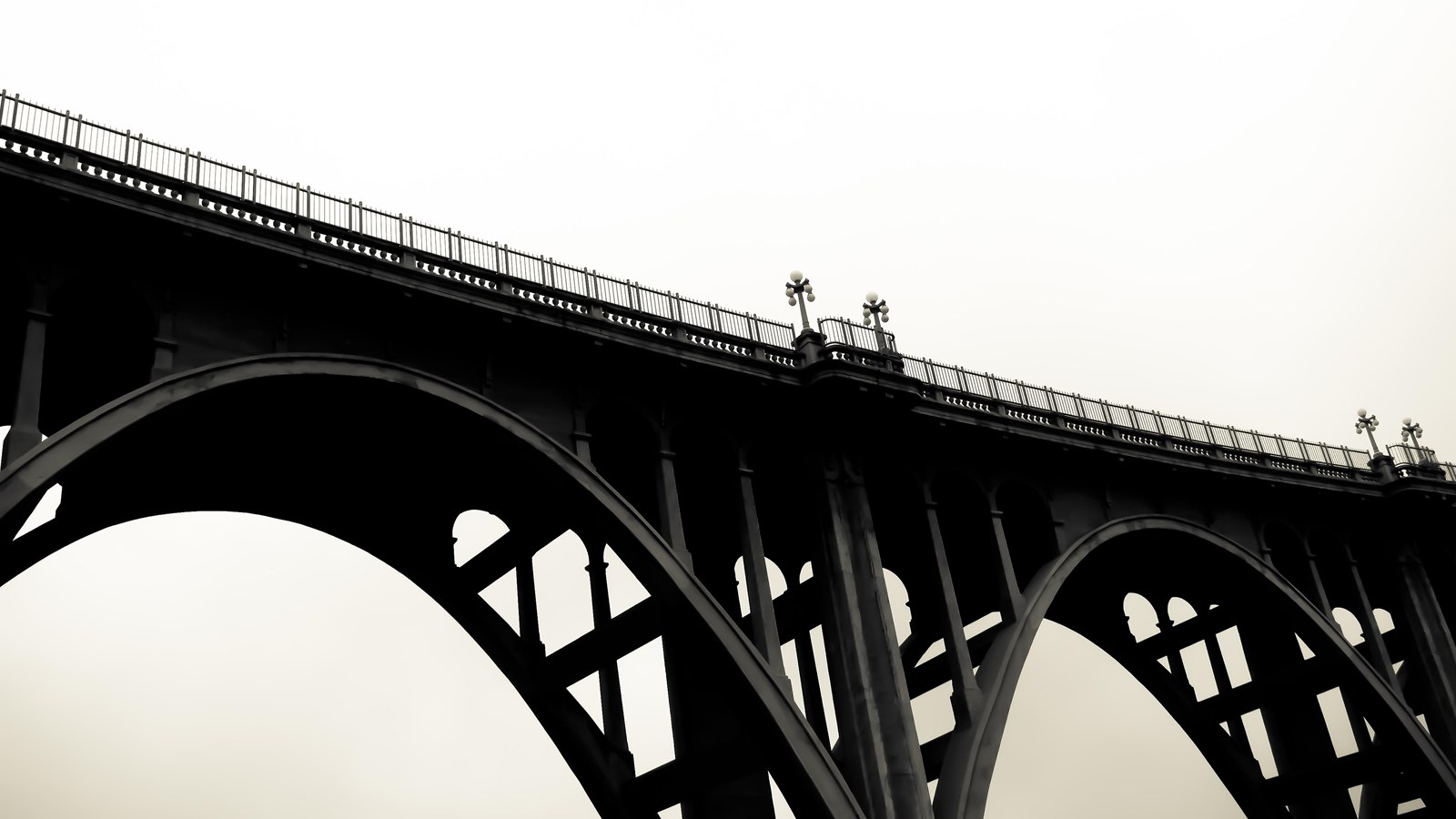Last updated: June 6, 2022
Place
California: Colorado Street Bridge

Photo courtesy of Rhys Martin
With its majestic arches rising 150 feet above the deeply cut Arroyo Seco, the Colorado Street Bridge was proclaimed the highest concrete bridge in the world upon completion in 1913. The bridge impressed travelers from the day it opened. Until then, the crossing of the Arroyo Seco required horses and wagons to descend the steep eastern slope, cross a small bridge over the stream, and then climb the west bank through Eagle Rock Pass. Given this harsh topography, the Colorado Street Bridge proved a challenge to design and build. Solid footing eluded engineers in the seasonally wet arroyo bed.
These engineering challenges were solved when engineer John Drake Mercereau conceived the idea of curving the bridge 50 degrees to the south. This solution coupled with a graceful design of soaring arches and a curved deck created a work of art that received Historic Civil Engineering Landmark designation and listing in the National Register of Historic Places. Mercereau chose to support the bridge’s 28-foot-wide roadway and five-foot-wide sidewalks using spandrel construction. In this system, support columns rest on the expansive arched ribs of the bridge. Mercereau’s design also included classical balusters and ornate cast-iron lamp posts supporting multi-globed lamps.
Construction took 18 months. Horse carts brought materials down the steep sides of the gorge. Records show that some 11,000 cubic yards of concrete and 600 tons of steel reinforcing went into the bridge. The company's single cement mixer poured concrete half a yard at a time into the bridge's hundreds of wooden forms that, when removed, revealed the bridge's arches, girders, spandrels, and decorative details. The bridge cost one quarter of a million dollars to build. Thousands of Pasadena citizens came to celebrate its opening.
The bridge connected Pasadena to Los Angeles, poising it to grow. Traffic on the new bridge was heavy. Only two lanes wide, the bridge was considered inadequate as early as the 1930s. The bridge remained part of Route 66 until the 1940 completion of the Arroyo Seco Parkway. By then, the Colorado Street Bridge had a sinister reputation as “suicide bridge.” The first person jumped from the bridge in 1919. A number of other deaths by suicide followed, especially during the Great Depression. Over the years, estimations put the number of people, who took their lives leaping into the Arroyo, at more than 100.
The historic bridge was listed in the National Register of Historic Places in 1981, but by that time, it was in disrepair. Chunks of concrete sometimes fell from its ornate arches and railings. After the Loma Prieta earthquake in 1989, the bridge closed as a precautionary measure. Eventually Federal, State, and local funds provided 27 million dollars in renovation costs. The bridge reopened in 1993, complete with all of its original ornate detail and a suicide prevention rail.
After admiring the bridge’s engineering, find a local and ask about some hauntings. A number of spirits are said to wander the bridge as well as the Arroyo below.
The Colorado Street Bridge spans the Arroyo Seco as part of Colorado Blvd. just south of the Ventura Freeway and between North San Rafael Ave. and North Orange Grove Blvd. in Pasadena, CA. To view the bridge from below, take West Holly St. west from North Orange Grove Blvd. and then turn left on Arroyo Dr., which joins with North Arroyo Blvd. to pass below the bridge. The local advocacy group, Pasadena Heritage, hosts a summer festival on the Colorado Street Bridge, closing the bridge to vehicular traffic.
To learn more about the bridge and festival, visit the Pasadena Heritage website.
See the Colorado Street Bridge National Register nomination form.
